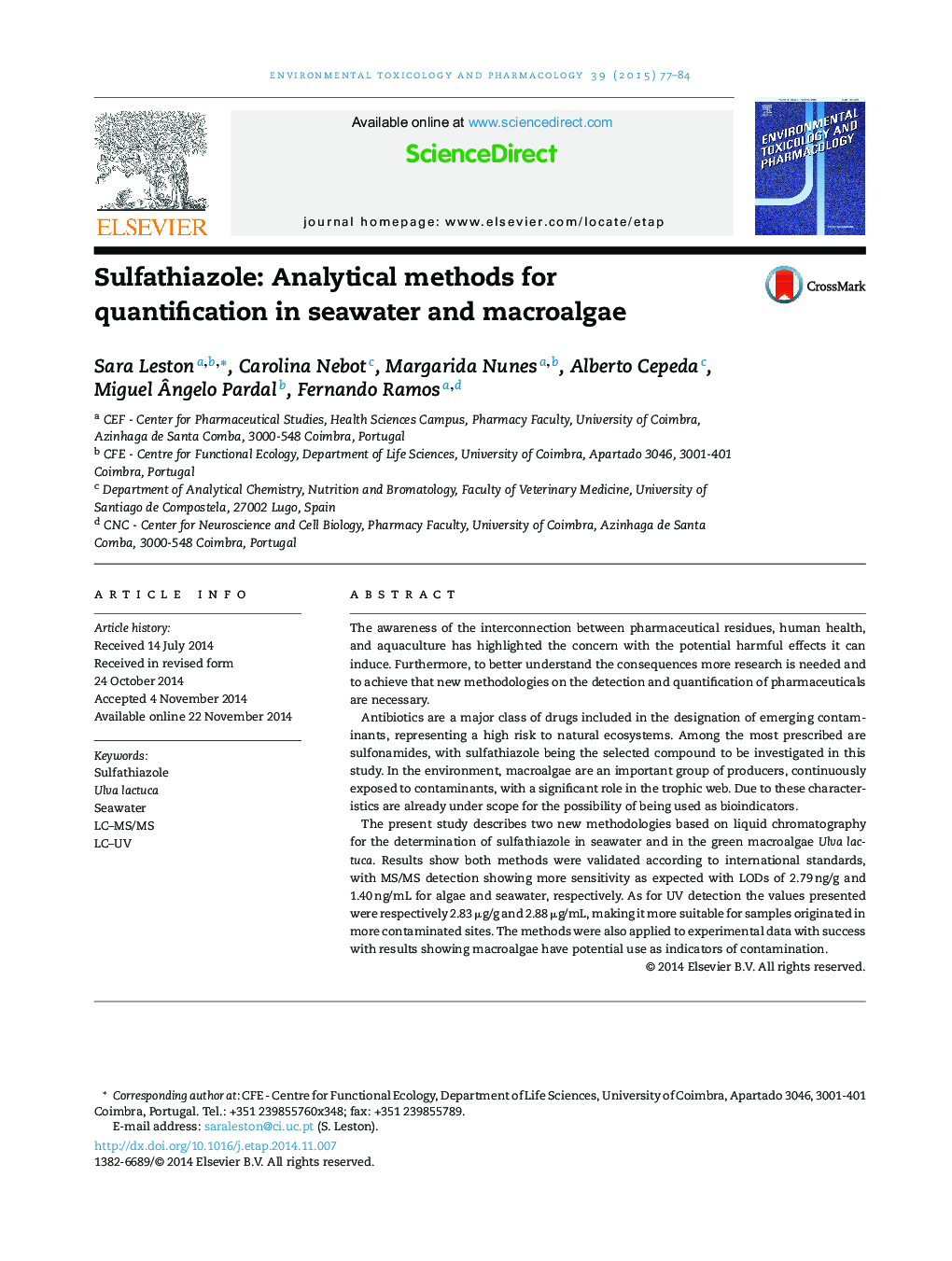| کد مقاله | کد نشریه | سال انتشار | مقاله انگلیسی | نسخه تمام متن |
|---|---|---|---|---|
| 2583268 | 1130685 | 2015 | 8 صفحه PDF | دانلود رایگان |
• Development of LC–MS/MS and LC–UV methodologies for sulfathiazole quantification.
• Extraction and detection of sulfathiazole in seawater and green macroalgae.
• Performance criteria demonstrated the methods were fully validated.
• Monitoring tools for environmental contamination.
The awareness of the interconnection between pharmaceutical residues, human health, and aquaculture has highlighted the concern with the potential harmful effects it can induce. Furthermore, to better understand the consequences more research is needed and to achieve that new methodologies on the detection and quantification of pharmaceuticals are necessary.Antibiotics are a major class of drugs included in the designation of emerging contaminants, representing a high risk to natural ecosystems. Among the most prescribed are sulfonamides, with sulfathiazole being the selected compound to be investigated in this study. In the environment, macroalgae are an important group of producers, continuously exposed to contaminants, with a significant role in the trophic web. Due to these characteristics are already under scope for the possibility of being used as bioindicators.The present study describes two new methodologies based on liquid chromatography for the determination of sulfathiazole in seawater and in the green macroalgae Ulva lactuca. Results show both methods were validated according to international standards, with MS/MS detection showing more sensitivity as expected with LODs of 2.79 ng/g and 1.40 ng/mL for algae and seawater, respectively. As for UV detection the values presented were respectively 2.83 μg/g and 2.88 μg/mL, making it more suitable for samples originated in more contaminated sites. The methods were also applied to experimental data with success with results showing macroalgae have potential use as indicators of contamination.
Journal: Environmental Toxicology and Pharmacology - Volume 39, Issue 1, January 2015, Pages 77–84
